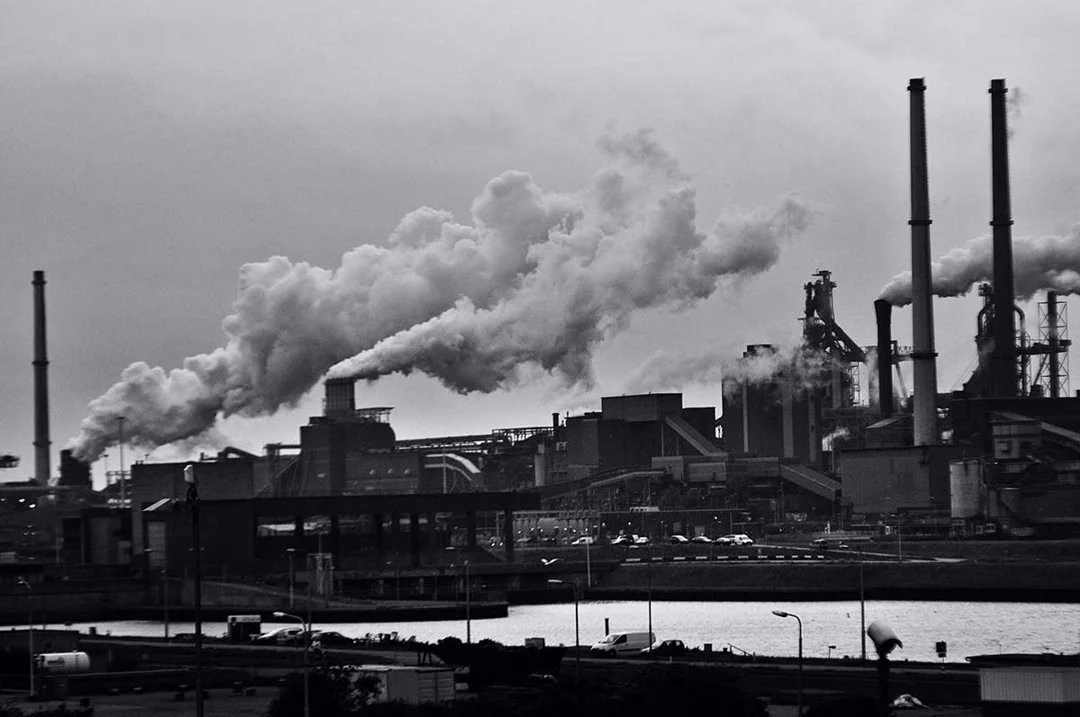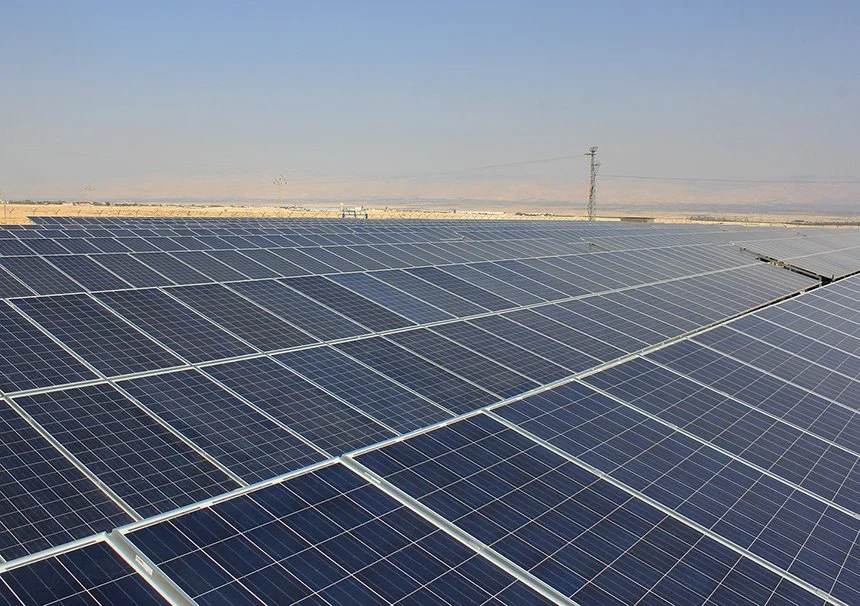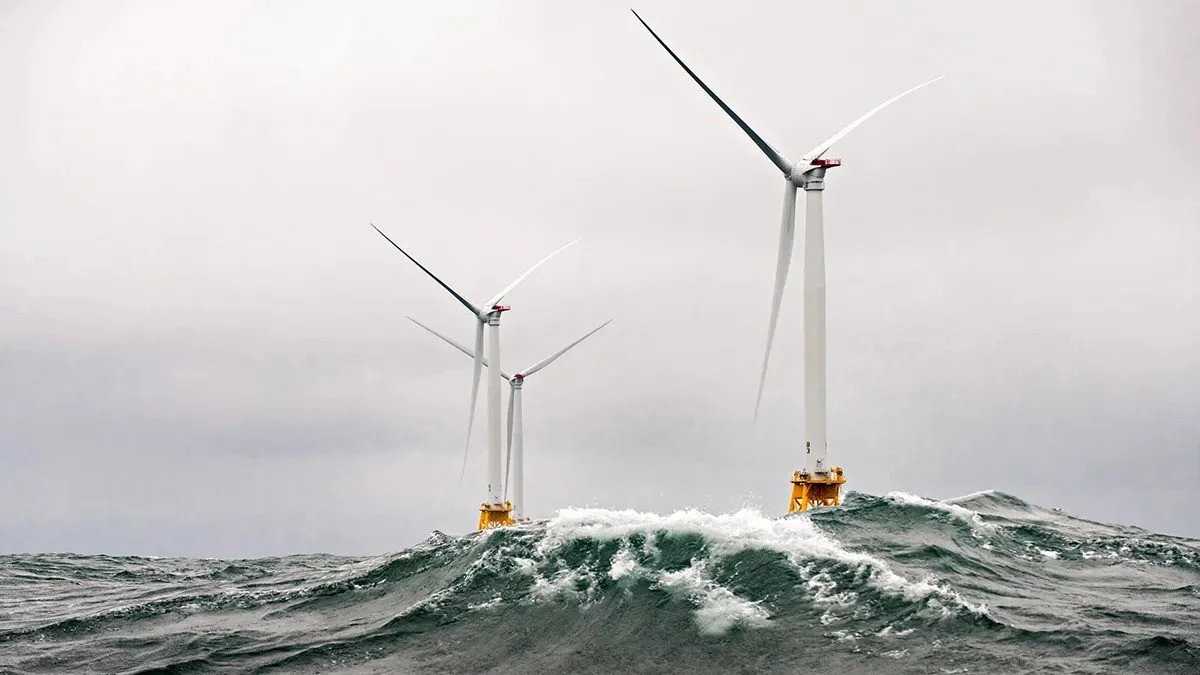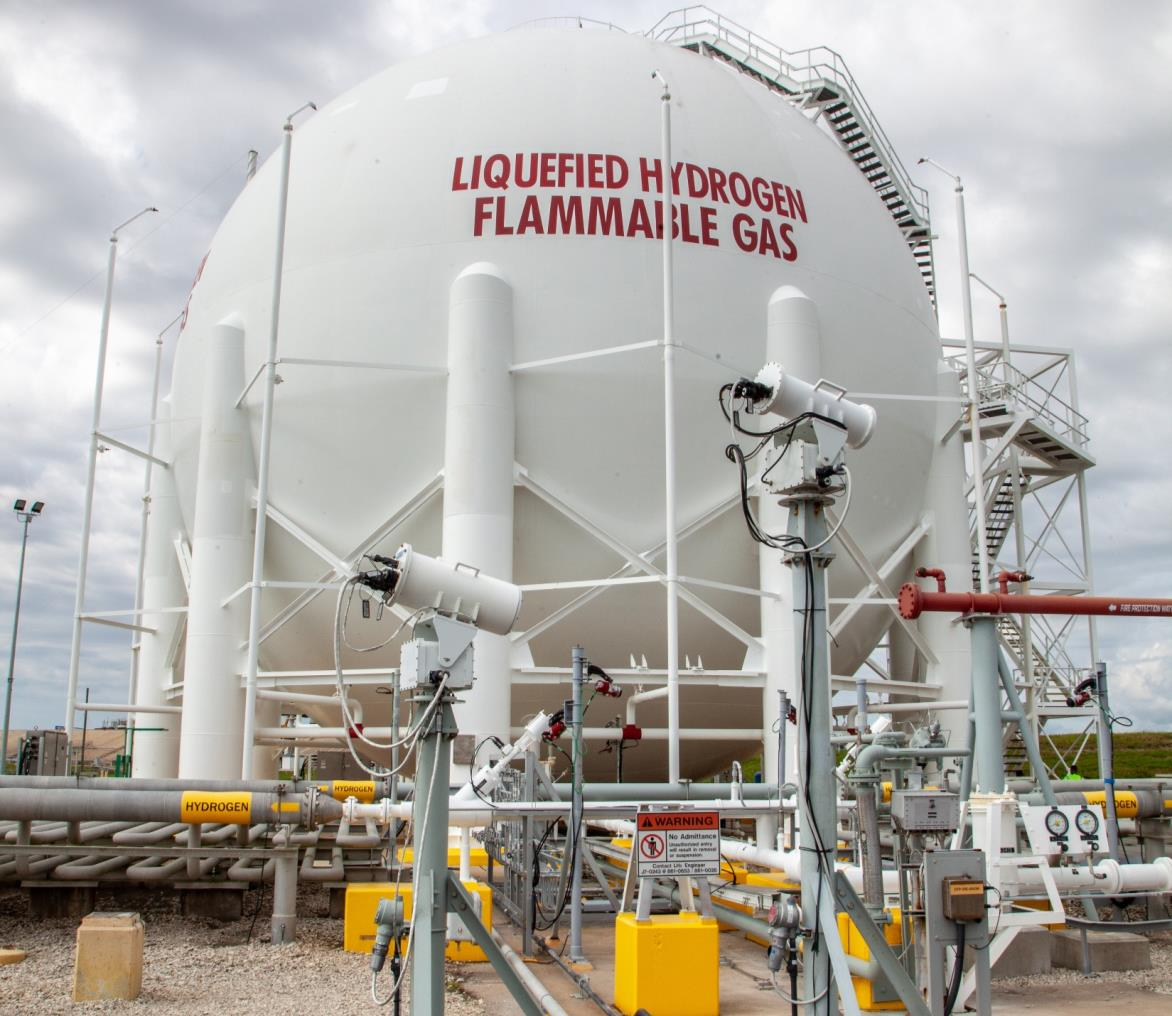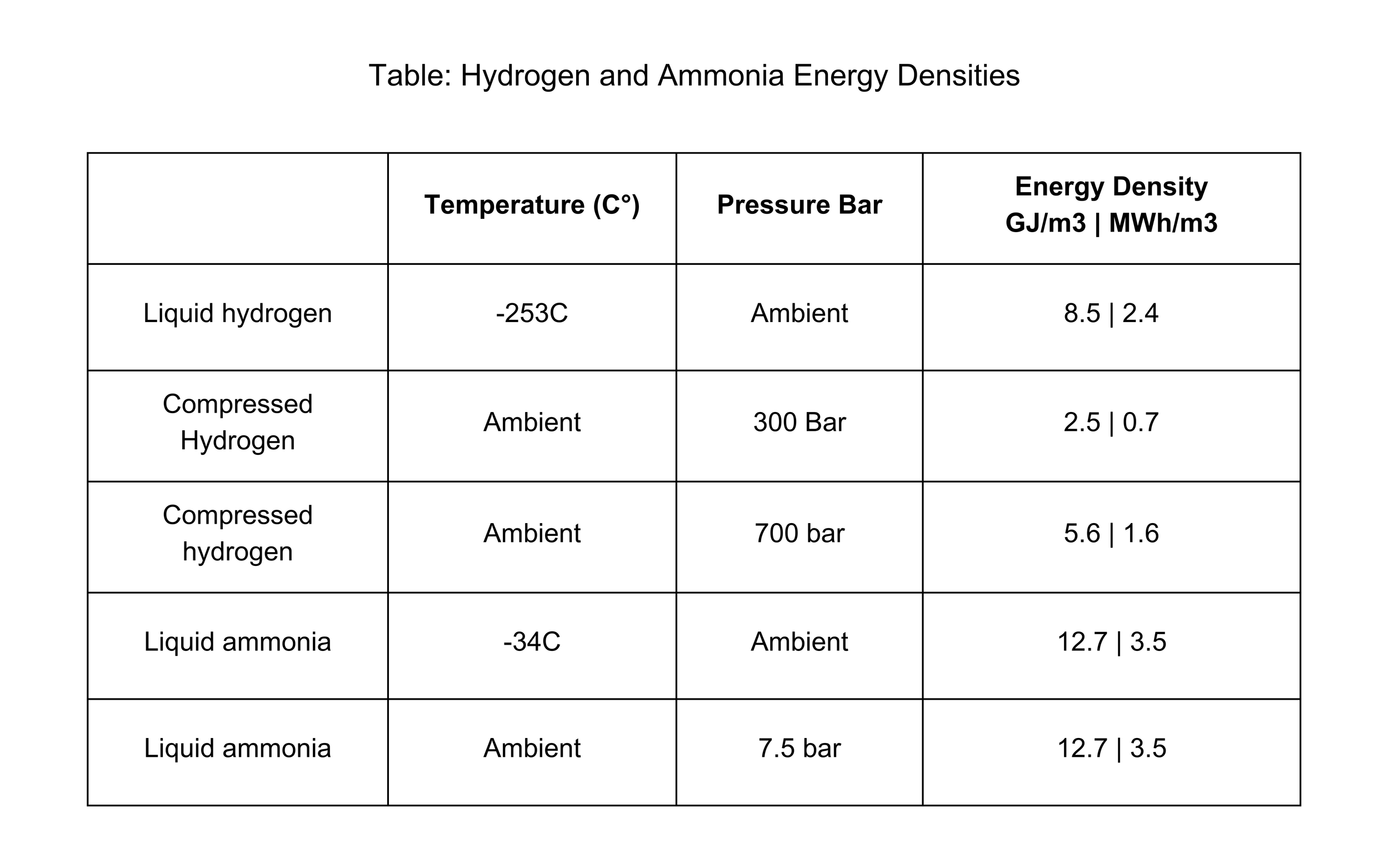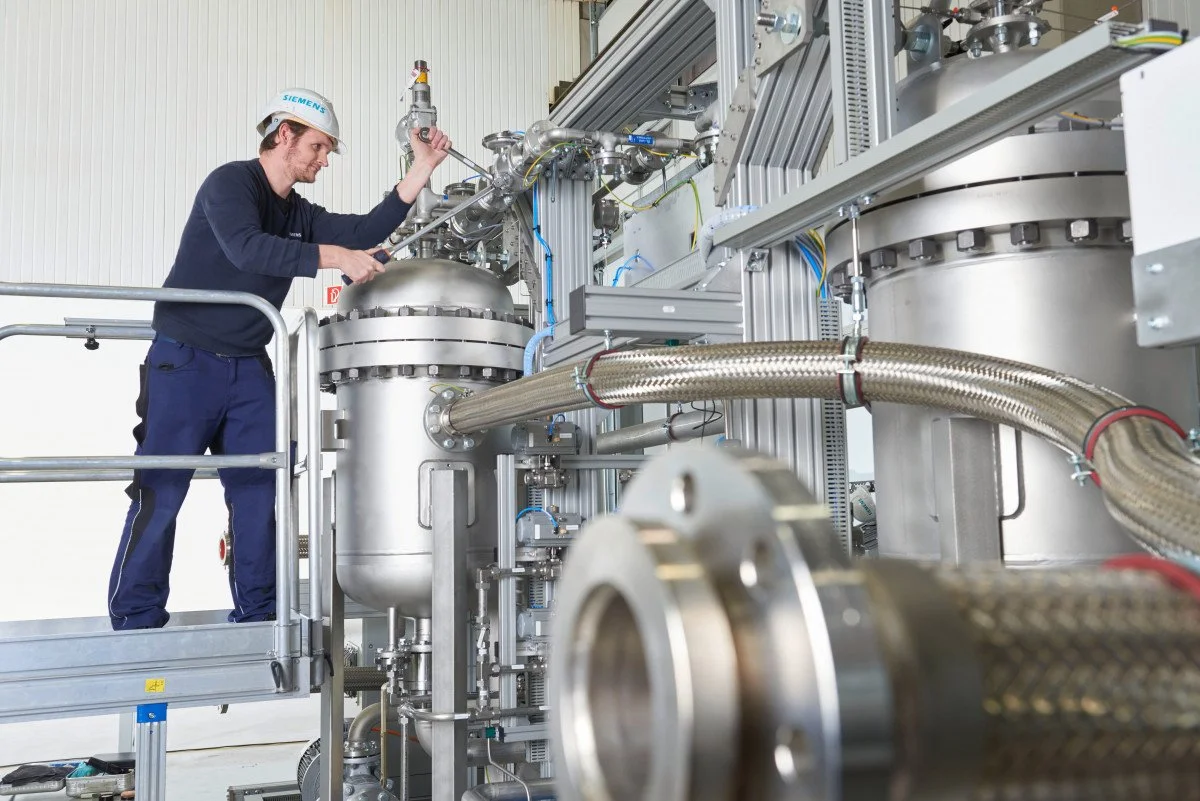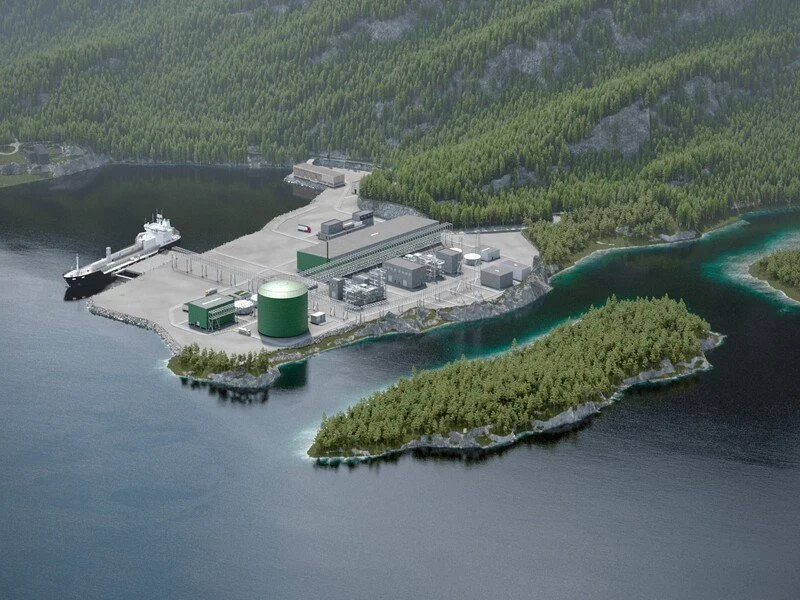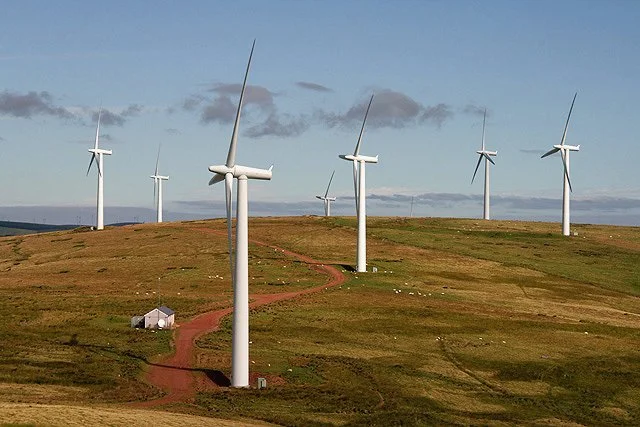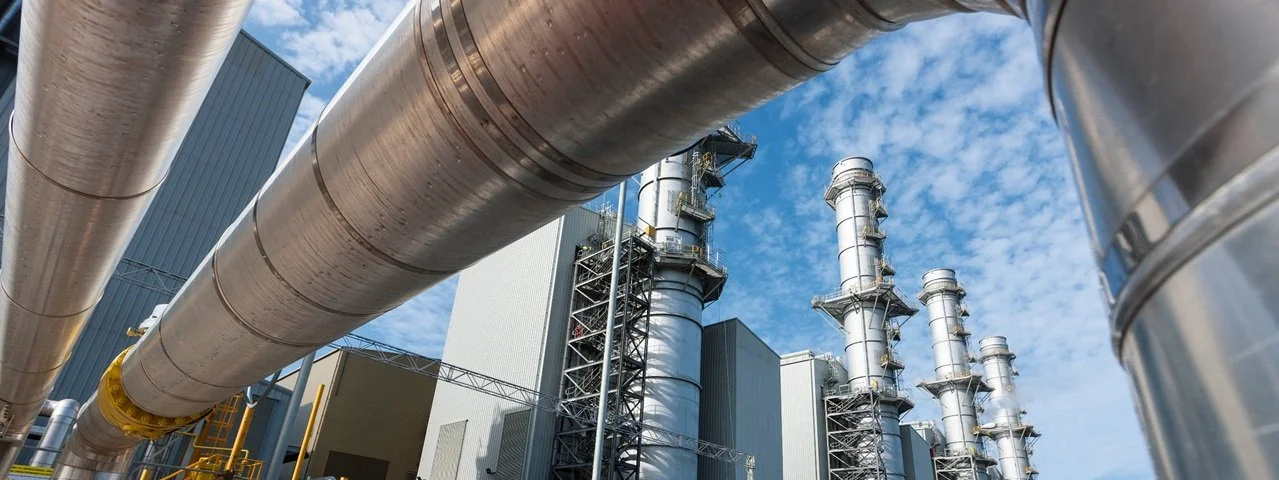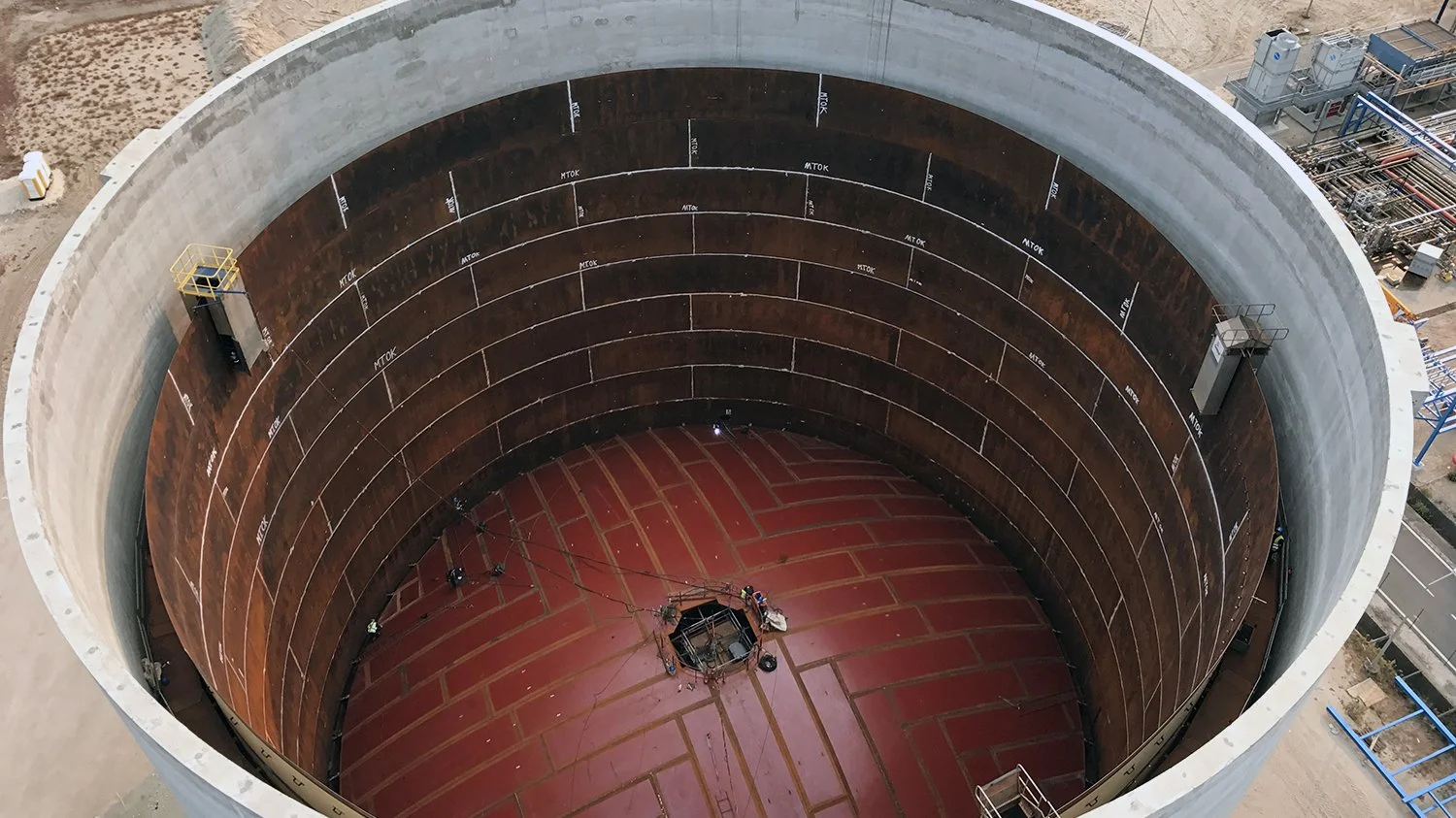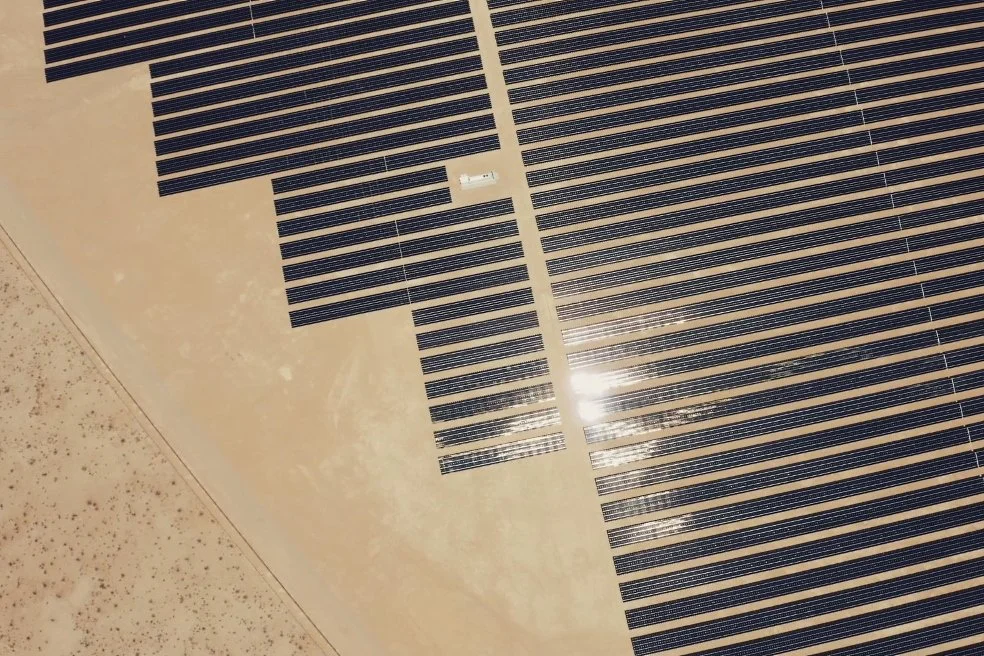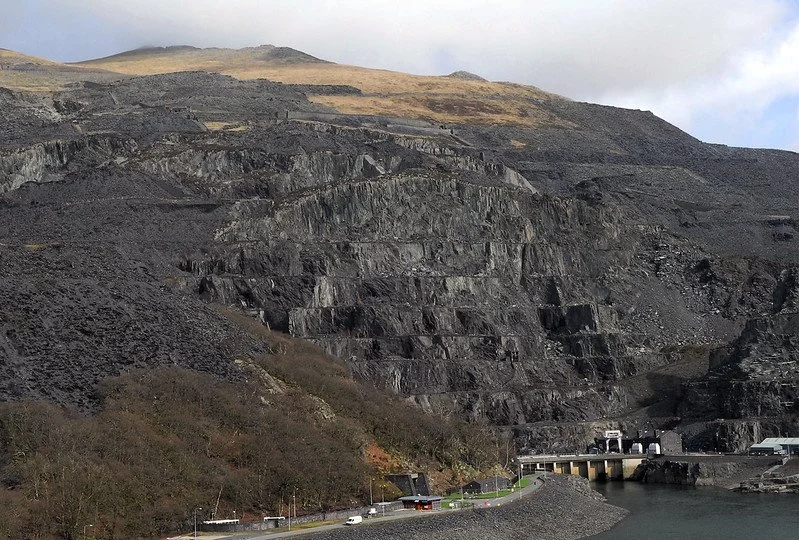Why Green Ammonia ?
There are important reasons why coal, oil and gas took over from wood, wind and water as the principal energy sources powering the global economy - those fossil fuels were plentiful, energy-dense, easily stored and transported, and constantly available on demand. Now, as the world transitions to a zero-carbon energy system, we need a renewable, carbon-free fuel that has those same qualities. It has to be able to move cheap renewable energy from places with abundant sunshine and wind, to where it’s needed, when it’s needed. That fuel is Green Ammonia.
When Renewable Energy Powered the World
Before the industrial revolution, almost all the energy available was renewable; wind, water, and wood. But using only renewable energy sources constrained the development of industry in three ways.
Not enough energy was available.
Energy was not consistently available when needed.
Energy could not be transported, other than wood (heavy) and charcoal (expensive). Industries had to be rooted where the wind blew, or water ran.
That all changed with the invention of the steam engine and the use of coal as an energy-dense, on-demand energy source, later to be joined by oil and natural gas.
With the arrival of coal boilers and steam engines, industry was liberated from these constraints, of quantity, time and place, and business boomed. These ‘fossil fuels’, have been powering society for almost 300 years.
Photo: Windmills at Kinderdijk, Netherlands. Credit: Willard84, CC-BY 3.0 via Wikimedia Commons.
We still need energy-dense, on-demand fuels !
We now need to return to renewable power with all possible speed to prevent catastrophic climate change. This will be mainly be achieved by electrification, because most renewable energy - solar PV, wind and hydro - is produced as electricity, and is most efficiently used in that form. Electric cars are taking over global markets, steel will be made using electric furnaces, and homes and businesses will increasingly be warmed and cooled by electric heat pumps.
But the need for energy-dense, on-demand fuels won’t go away. We have solved the problem of producing almost limitless renewable energy at remarkably low cost using cheap PV and wind turbines. In sunny places, or those that are exceptionally windy, electricity now is cheaper than it has ever been in the history of mankind.
In 2021 Saudi Arabia built a 600MW solar PV project at a power price of just over one US cent ($0.0104) per kWh and this price trajectory is firmly downwards for the foreseeable future.
For example, Oxford PV recently announced that its latest solar modules, based on low-cost perovskites, are 26.9% efficient - up from a typical 21% today. When these come to market they’ll increase the output of solar installations on a given area by a massive 28%.
Photo: The arrival of coal as an industrial fuel changed everything! Credit: Public Domain.
Photo: PV Power Generation at Jericho, Palestine. Credit: TrickyH / Wikimedia Commons, CC-BY 4.0.
Photo: Offshore wind turbines off Block Island, R.I. Credit: Dennis Schroeder / National Renewable Energy Lab, CC BY-NC-ND 2.0
Photo: Vanadium flow batteries are well suited to support power grids, but too costly for long-term storage. Image: TNG Energy.
However we still have the problem faced by 18th century industrialists, of delivering this energy when it is needed and where it is needed.
Electricity is notoriously hard to store. Batteries can hold electricity but they are heavy and expensive. The best batteries today can barely hold 1/80th the energy of the same weight of oil. They have the advantage of storing electricity which can be 2-3 times as efficient to use as oil, but nonetheless a battery powered device carries 25-40 times more weight of fuel than a fossil fuelled one.
Not only is it hard to store – but batteries are expensive. If a battery is used many times a day, say for balancing power on a national grid, the cost can be spread over several thousand uses a year. Even if it is used once a day to meet the difference between day and night supply, the cost is spread over 365 uses per year. But using batteries to cope with an event that happens once or twice a year – say when the wind doesn’t blow and the sun doesn’t shine, or even worse – perhaps once or twice in ten years when the weather is exceptional, is incredibly expensive. They are not the solution to this problem
As the UK Energy Research Council (UKERC 2021) puts it, “Even with the enormous improvements in battery technology they still fall several orders of magnitude short in both available power and its duration when compared to chemical storage, such as currently embodied in fossil fuels. Even if this could be overcome, replacing just a day’s worth of natural gas balancing capability with batteries would cost over £1 trillion.”
We also needed to be able to move that energy from where it can be produced cheaply, to where it’s needed. The cheapest places to produce renewable energy will largely be in the sunny dry regions of the world. Some windy areas will be attractive, but it will be rare that they are cheaper than ideal solar. Those dry sunny areas tend to be remote – because they are dry they mostly have limited populations or industry – so to use the energy they can produce it will need to be exported.
Electricity can be moved by wire – and very high voltage DC (HVDC) systems able to move electricity thousands of miles are already being developed. However, they are limited in several ways
The electricity can only go to where the wire goes. So if Northern Europe needs electricity in the winter when heat demand is dominant, but India needs it in the summer when it needs cooling – you would have to build two wires and use each only half the time
Those wires would have to cross multiple countries, with all the geopolitical and commercial consequences that would bring.
The wire would only come from one source or region – so instability in the source country, or some other failure, leaves the destination countries highly exposed.
If the energy cannot be moved electrically, it has to be moved chemically. The Periodic Table of elements constrains what is possible. Essentially there are three routes; hydrogen alone, a hydrogen-carbon compound, or a hydrogen-nitrogen compound, namely ammonia. Everything else is impossible, explosive, or impractical.
Hydrogen?
Hydrogen can be generated by using electricity to split water into hydrogen and oxygen. It’s an easy fuel to burn or even use to make electricity in a fuel cell, but it faces serious problems.
Hydrogen is exceptionally hard to store or transport. To liquefy it at ambient pressure it needs to be cooled to -253C, and even then only has an energy density of 2.3 kWh/m3 compared to kerosene at 10MWh/m3 or ammonia at 3.8MWh/m3.
Alternatively it can be compressed, usually to either 350 or 700 bar (atmospheres) to make a liquid-like supercritical gas with an energy density of 0.8 MWh/m3 or 1.4 MWh/m3, respectively.
Whether cooled or compressed, preparing hydrogen for storage takes energy: almost 30% of its energy content is needed for liquefaction, 10% for 700 bar pressure, or 6% for 350 bar pressure. And for all its light weight (1/3rd that of kerosene and 1/6th that of ammonia) the mass of tanks, pumps and insulation needed to store it at high pressure or low temperature means the system weight is nowhere near so light.
Liquefaction cost could fall to 20% of the contained energy (7 MWh/t) based on active magnetic regenerative liquefiers, and that this novel technology is “potentially capable of lower costs than conventional liquefaction plants especially at small liquefaction scales (2,000 to 5,000 kg of liquid hydrogen per day).”
But that won’t be a game changer. The energy costs of hydrogen liquefaction or compression are acceptable provided the operation takes place at the production site where energy (in most cases solar) is super-cheap.
The biggest problem for hydrogen as a long term energy storage medium (e.g. for inter-seasonal power generation) is getting low cost hydrogen to where you want it, and the high cost of containing it in either high pressure or low temperature tanks.
According to Andrew Burke and colleagues of the Institute of Transportation Studies, UC Davis (2024) the cost of a 1,500 kg tank operating at 350 bar is $650-$700 /kg, or about $20 /kWh. This puts it somewhat cheaper than lithium batteries - but with much lower round trip efficiency (less than half the typical 80% of batteries).
Super-insulated tanks for liquid hydrogen are much less expensive at about $70-$105 /kg, according to Burke, or just $2-3 /kWh. But other costs are greater, including the initial cooling to -253C and the ongoing boil-off of hydrogen caused by thermal leakage. This latter cost is minimal in a very large tank, but significant in small tanks, rendering them unsuitable for passenger vehicles.
The final option is to store hydrogen in large underground salt caverns, constructed in deep, geologically stable structures such as salt domes. Much of Northern Europe has such caverns, with more storage potential than is needed, and the costs are modest, at $0.036 (£0.03) /kWh. So salt caverns should be used wherever available, “especially long-term storage as no other option offers such a high cost-effectiveness”, Burke concludes.
But where will the hydrogen be made? Hydrogen is expensive, bulky, dangerous and difficult to move. It can be moved in pipes, but it has a remarkable ability to leak through materials, even steel, and from valves and joints. Hydrogen leaks are explosive, and if it survives as a gas it is a modestly powerful greenhouse gas in its own right. It cannot be transported as a liquid because of the extreme cold.
This favours hydrogen being made close to where it is being used which is not necessarily where it is cheapest to make it. It can be produced locally from wind or solar power surplus to immediate needs, but as such periods of excess power will be intermittent and the power available very variable, the large capital investments in making hydrogen will be massively under-utilised, adding significantly to cost.
Image: Liquid Hydrogen Tank at NASA's Kennedy Space Center. Hydrogen is very expensive to store at a viable energy density: either as a super-cooled liquid below -253C, or at a pressure of 350-700 atmospheres. Credit: US Department of Energy / Public Domain.
Photo: a 93 litre insulated tank for liquid hydrogen, located at the Deutsches Museum in Munich. It requires a vacuum between the inner and outer containment layers. Credit: Tiia Monto via Wikimedia Commons, CC BY-SA 3.0.
Image: crystals of high purity mineral halite from the Wieliczka salt mine in Poland - the ‘evaporite’ residue of an ancient salty sea. Halite deposits can be hundreds of metres deep and extend over many thousands of square kilometres. Such deposits will be of increasing value for storing Green hydrogen and ammonia produced from renewable energy. Credit: Lech Darski via Wikimedia, CC BY-SA 4.0.
Hydrogen - Conclusion
Green hydrogen has important but limited role to play. If countries have both appropriate geology, and good potential for low-cost renewable power generation, it makes sense to build renewable power capacity beyond the need for immediate consumption, and use the surplus to generate hydrogen for storage in salt caverns.
In countries without both low cost zero carbon energy and capacity for salt cavern construction, hydrogen is problematic for long term storage owing to high costs of transport, and the high capital cost of storage.
In order to use liquid hydrogen it has to be liquefied on site – you cannot move material at -253C in a pipe. This has huge implications for any large scale mobile demands like aviation and shipping. A major global airport like Heathrow would need a nuclear power station simply to liquefy its daily fuel needs.
Hydrogen, therefore, can satisfy some of society’s energy needs in some places but its role is limited.
Image: Schematic diagram of the Green methanol economy. Credit: MDPI / Department of Energy Technology, Aalborg University.
Carbon based fuels as energy carriers?
The other option for shifting energy over time and place is to use renewable energy to produce carbon-based synthetic fuels like methane, or methanol, or even e-jet fuel. These need both green hydrogen and also non-fossil carbon. Carbon can be captured from CO2 rich gas streams like gas power station chimneys or cement plants, or directly (and expensively), from the air. The chemical processes are reasonably well understood if not all proven, and this offers a relatively rapid route away from fossil fuels.
Nonetheless these fuels can only be a temporary solution. Once CO2 is in the atmosphere it remains there for a long time, so to stabilise the climate society needs to stop all CO2 emissions. Because of lags in the system that brings the Earth back into temperature balance, temperatures will continue to rise even after CO2 emissions stop, so a stable climate will actually require society to take emissions out of the atmosphere.
The IPCC special report on 1.5C, in its ‘Summary for Policy Makers’ shows a range of pathways for CO2 management. All require negative CO2 before 2050 – many require huge amounts. A fair assessment would be that we need 10Gt per year of emissions reduction. In addition, a report from Oxford University suggests that we need an additional 5Gt per year of CO2 to provide the carbon we use for ‘stuff’, plastics, fabrics, lubricants etc. To get this 15Gt per year of CO2 from the atmosphere using Direct Air Capture would mean mechanically handling and chemically treating 1 million tonnes of air per second for the foreseeable future.
Given this, it seems unlikely that there will be any capacity to re-emit any CO2 once it has been captured – especially when an alternative, carbon free, fuel is available. In conclusion, carbon based fuels have an important potential role in making rapid reductions in CO2 emissions, but in the longer term their use cannot be sustained.
Image: Green ammonia produced using renewable energy can be used for power generation, energy storage and transport, fuel and fertiliser. Source: The Davos Agenda / World Economic Forum, CC BY-NC-ND.
Photo: Electrolysers like this Siemens model are crucial for our Green energy future, as they convert renewable electricity into hydrogen and oxygen. The hydrogen may then be combined with nitrogen to produce ammonia. Credit: Siemens.
Photo: the world’s first purpose-built liquefied hydrogen carrier, the Kawasaki Heavy Industries Suiso Frontier, at port in Kobe, Japan. Credit: Hunini via Wikimedia Commons, CC BY-SA 4.0.
Or Green Ammonia?
The remaining choice is ammonia. It’s already used to make fertiliser (almost all currently made using fossil fuels), and an important refrigerant for industrial freezers.
Each molecule of ammonia contains one atom of nitrogen and three of hydrogen. It’s made from air, water and electricity; per kilo ammonia has 40% of the energy density of kerosene, and after the systems needed to store hydrogen into account, ammonia even has more energy per kg than hydrogen. A given volume of ammonia gas (NH3) actually contains 50% more hydrogen than hydrogen gas (H2). Moreover ammonia can be liquefied at ambient pressure at a temperature of just -33.3C, or at ambient temperature at just 10 Bar.
There's an energy cost of turning hydrogen into ammonia, but it’s modest compared to the energy needed to make the hydrogen, and because it will be made where the hydrogen is produced, and the energy is cheap, the net cost is very low. These energy costs are set out in detail in our page on Green ammonia production.
Ammonia can be burned in an adapted conventional engine such as a ship engine or a large generator, or it can be used in a fuel cell to produce electricity. It can also act as a chemical reducing agent – replacing hydrogen and coal in processes such as steel making.
The great advantages of ammonia are due to a number of factors. It can be made relatively cheaply almost anywhere with very low cost renewable energy close to a source of water such as the sea; it’s cheap to liquefy and easy to store; it can be shipped 200,000 tonnes at a time in existing LPG tankers to anywhere in the world within a matter of days, affording massive flexibility and reliability to energy systems that rely on it.
Ammonia does present some challenges though: safety and pollution.
When ammonia is burned at high temperature it can form polluting NOx gases. These are produced in high temperature combustion of any fuel, but ammonia, which uses its nitrogen as a hydrogen carrier, produces more than other fuels. However there’s a lot of research aiming to manage this, with considerable success.
One of the key strategies involves converting a small portion of the ammonia back to nitrogen and hydrogen using catalysts and waste heat from the engine. Research shows that, done carefully, this can deliver low levels of NOx, well within current regulations.
And using ammonia in a fuel cell does not involve combustion, so avoids the problem of NOx emissions altogether.
All fuels are dangerous, the issue is whether the dangers can be managed and the risks are acceptable. Ammonia is safer than many carbon-based fuels or even batteries because it is very difficult to create a fire with ammonia. It’s also very smelly, so even the smallest leaks can be detected very easily with no equipment needed.
The principal risk from ammonia comes from breathing it in higher concentrations than about 3,000 parts per million which is likely to be fatal to humans. There are several solutions to this, which are currently being worked on. These rely on ammonia’s high latent heat of vaporisation. This makes it hard to evaporate ammonia, and at low temperatures between its boiling point (-33C) and its freezing point (-77C) it becomes exceedingly hard to make it evaporate at all.
Conclusion - Green Ammonia
Ammonia is a flexible alternative to carbon based fuels and hydrogen. It‘s much more practical to move and store than hydrogen, and has the advantage of no carbon content compared to carbon based e-fuels. Its energy density is acceptable and when the total system weight is considered it outcompetes hydrogen.
It will be slightly more expensive to make than hydrogen, but because it can be made in the places where electricity – the major cost in the production of hydrogen or ammonia, is very low cost, the cost penalty will be lower than the costs of moving hydrogen and storing it at the sites where it is needed.
Flexibility though it perhaps its greatest strength. Ammonia can be moved across the world from place of production to place of demand with the same ease as oil and gas.
And as well as serving as a fuel, it can also be used to make fertiliser, and for other chemical processes. This means that ammonia production facilities can operate at optimum capacity almost all the time, driving down costs and driving up reliability of global energy systems.
Image: principles of an Atrex SOFC fuel cell, capable of burning ammonia. The tubular design prevents catastrophic damage from temperature gradients that occur during thermal cycling. Credit: Atrex Energy.
Image: Schematic of pure ammonia fuel partially cracked into hydrogen and nitrogen (10-20%), then mixed with ammonia and injected into an internal combustion engine. The cracker uses the engine’s waste heat. Credit: Sunborne Systems.
Photo: The Holmaneset Energy Project in western Norway will convert surplus locally generated renewable power into Green hydrogen and Green ammonia.
Photo: Onshore wind is the UK’s cheapest power source, however almost all new onshore wind farms are in Scotland and Wales due to England’s discriminatory planning policies. Credit: Black Hill Wind Farm in the Scottish Borders by Walter Baxter via Geograph CC-BY-SA 2.0.
Photo: These perovskite-based PV cells, developed by Oxford PV and the Fraunhofer Institute for Solar Energy Systems, can convert 25% of incident solar radiation energy into electricity, establishing a new world record in January 2024. Credit: Fraunhofer Institute.
Photo: UK power prices are set by the cost of gas fired generation at plants like this 2.2GW CCGT (combined-cycle gas turbine) in Pembrokeshire, Wales. High gas costs mean electricity bills are at near record levels. Credit: RWE.
Photo: The challenge is to meet all energy needs from renewables, all the time! Credit: London skyline by Dronepicr via Wikimedia CC BY 3.0.
Photo: in an all-renewable energy system, power must be available on demand at all times. A ‘Dunkelflaute’ event seen at Great Woodend Farm near Ross-on-Wye. Credit: Roger Davies via Geograph.
Photo: Llyn Paris on the Elidir Fach mountain. The lake is used as the lower reservoir for the Dinorwig pumped-storage power station in North Wales. Credit: Denis Egan CC-BY 2.0 via Flickr.
Photo: A 36,200 m3 cryogenic tank for liquid ammonia under construction by Geldof. The tank has a concrete outer shell, a carbon steel liner, and high performance insulation in between. Credit: Geldof.
Photo: Can Green ammonia compete? With its restoration of the Rough Gas Storage Facility in the North Sea, Centrica doubled the UK’s storage capacity to some 20 TWh, enough for 12 days’ usage. Photo: Centrica.
Photo: The 2GW Al Dhafra solar project in Abu Dhabi is among the world’s biggest, and cheapest. Similar projects will set the international price for Green ammonia. Photo: ESFC.
Photo: the Dinorwig pumped-storage hydropower station lies within the Elidir Fach mountain, North Wales, scarred by decades of slate mining. Credit: Denis Egan CC-BY 2.0 via Flickr.
Notes
Ammonia’s thermal energy value is quoted as 18.6 GJ per tonne (or 12.7 GJ / cubic metre for cold ammonia). 3.6 GJ = 1 MWh. So we have 5.2 MWh per tonne of ammonia.
Liquid Petroleum Gas (LPG) is composed of a mix of gases so there is no hard figure for its density but 550kg / cubic metre is a reasonable average figure. LPG has a typical energy density of 46 GJ / tonne, hence 25.3 GJ / cubic metre.
The 2023 UK price of LPG is $946 /m3, equivalent to $1,720 (£1,420) /tonne. A tonne of LPG is equivalent in energy value to 46 / 18.6 = 2.5 tonnes of ammonia, worth (at our estimated $400) $1000. That represents a 42% discount, GJ for GJ, for ammonia versus LPG.
Bunker or marine diesel oil typically costs $700/m3 and has an energy density of 36 GJ/m3. The energy equivalent amount of liquid ammonia would be 1.94 tonnes. At $300 /tonne that ammonia would be worth $582, more than 10% less than the current price of bunker oil.
Round-trip Efficiency of Ammonia as a Renewable Energy Transportation Media https://www.ammoniaenergy.org/articles/round-trip-efficiency-of-ammonia-as-a-renewable-energy-transportation-media/
https://www.pv-magazine.com/2020/07/27/exclusive-interview-jinkopower-on-how-it-offered-the-worlds-lowest-solar-power-price/
https://www.energy.gov/eere/fuelcells/articles/fuel-cells-fact-sheet
https://www.pv-magazine.com/2023/04/14/average-solar-lcoe-increases-for-first-time-this-year/
Page 12, https://www.irena.org/-/media/Files/IRENA/Agency/Publication/2022/May/IRENA_Innovation_Outlook_Ammonia_2022.pdf
The price of LNG in September 2023 was $42.60 /tonne. https://oilprice.com/Energy/Natural-Gas/Winter-Gas-Price-Rally-Unlikely-Despite-Recent-Volatility.html
LNG has an energy density of 53.6 GJ/tonne, or 15 MWh/tonne. So at current price levels of $42.60 /MWh, LNG is priced at $639 /tonne.


